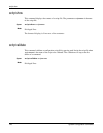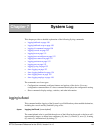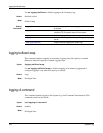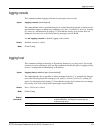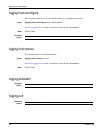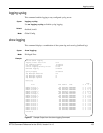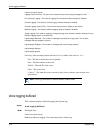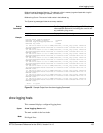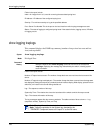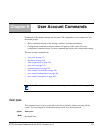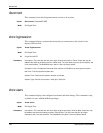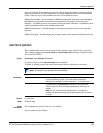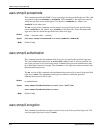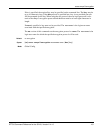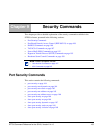
156 System Log
show logging traplogs
Fields in the report include:
Index—An integer from 1 to 8, used for removing the associated syslog host
IP Address—IP Address of the configured syslog host
Severity—The minimum severity to log to the specified address
Port—Server Port Number.This is the port on the local host from which syslog messages are sent.
Status—The state of logging to configured syslog hosts. If the status is Active, logging occurs; if Disable,
no logging occurs.
show logging traplogs
This command displays the SNMP trap summary (number of traps since last reset and last
view) and trap details.
Syntax
show logging traplogs
Mode
Privileged Exec
Command
History
Fields in the report include:
Number of Traps since last reset—The number of traps that have occurred since the last reset of this
device.
Number of Traps since log last displayed—The number of traps that have occurred since the traps were
last displayed. Getting the traps by any method (terminal interface display, Web display, upload file from
switch etc.) will result in this counter being cleared to 0.
Log—The sequence number of this trap.
System Up Time—The relative time since the last reboot of the switch at which this trap occurred.
Trap—The relevant information of this trap.
The log messages appear after the summary statistics. The table consists of three columns — Log
(sequential number), System Up Time, and Trap.
Version 2.3
Modified: Replaces the
show msglog command with the use of the keyword
traplogs, displaying the message log maintained by the switch, including system
trace information.
Note: Trap log information is not retained across a switch reset.
Note: Traps are replicated in the System log, denoted by the
“TRAPMGR” Component name and “traputil.c” as the file name.



